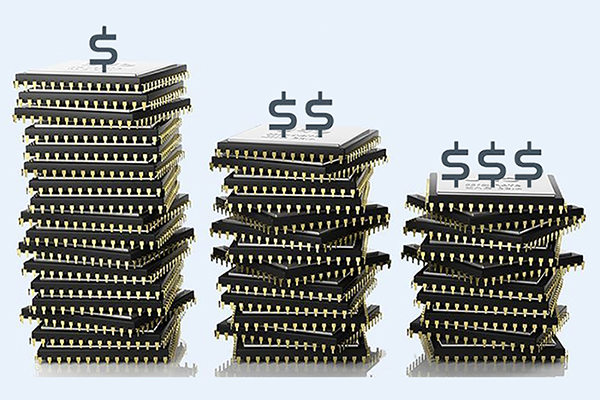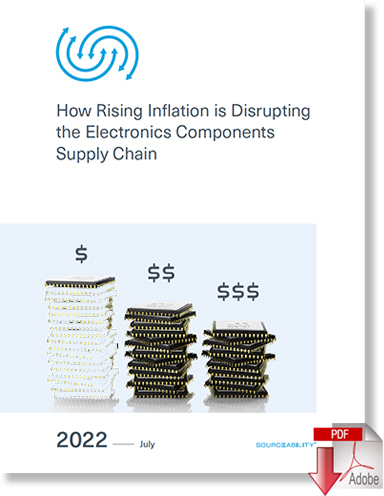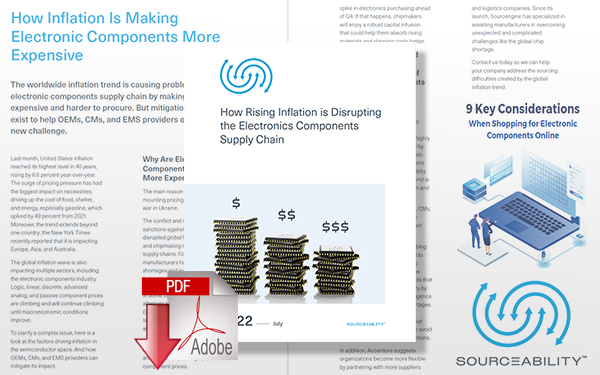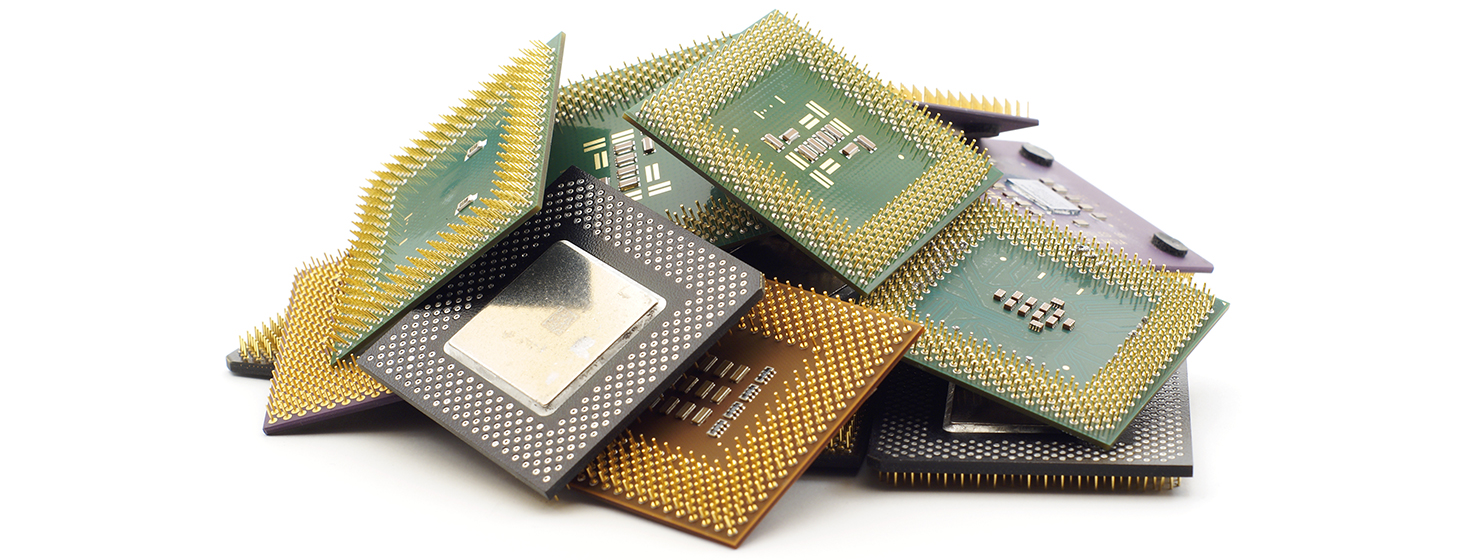The Impact of Inflation on the Electronics Components Supply Chain Industry

The global inflation wave is also impacting multiple sectors, including the electronic components industry, logic, linear, discrete, advanced analog, and passive component prices are climbing and will continue climbing until macroeconomic conditions improve.
How Rising Inflation is Disrupting the Electronics Components Industry
Last month, United States inflation reached its highest level in 40 years, rising by 8.6 percent year-over-year.
The surge of pricing pressure has had the biggest impact on necessities, driving up the cost of food, shelter, and energy, especially gasoline, which spiked by 49 percent from 2021.
Moreover, the trend extends beyond one country; the New York Times recently reported that it is impacting Europe, Asia, and Australia.
The global inflation wave is also impacting multiple sectors, including the electronic components industry. Logic, linear, discrete, advanced analog, and passive component prices are climbing and will continue climbing until macroeconomic conditions improve.
To clarify a complex issue, here is a look at the factors driving inflation in the semiconductor space. And how OEMs, CMs, and EMS providers can mitigate its impact.
Why Are Electronic Components Becoming More Expensive?
The main reason the world is facing mounting pricing pressure is Russia's war in Ukraine.
The conflict and multiple international sanctions against Russia have disrupted global food, energy, and chipmaking raw material supply chains. For months now, manufacturers have struggled with shortages and extreme cost volatility for various noble gases, palladium, nickel, platinum, and aluminum. In some cases, OEMs have found alternate suppliers outside of Eastern Europe. But quickly establishing new supply relationships is an expensive and challenging endeavor.
The coronavirus flareups affecting China since earlier this year are another factor pushing up electronic component prices.
Beijing enacted a series of policies called “zero Covid” to contain new outbreaks of the disease with strict lockdowns and rigorous testing. Since many chipmakers maintain production capacity in regions impacted by the quarantine mandates, IC outputs fell by double digits. The new import and export constraints severely disrupted established ground and maritime logistics pathways.
Losing access to a global manufacturing hub paralyzed a large portion of the electronic components supply chain.
Bloomberg reported that ongoing geopolitical conflicts and COVID lockdowns created significant inflationary pressure, making microelectronics manufacturing 20 to 30 percent more expensive. As a result, chipmakers and their foundry service providers have had to pass their rising operating costs downstream.
How Long Will Inflation Continue Affecting the Electronic Component Supply Chain?
Right now, it’s unclear when the global inflation wave will stop driving up semiconductor production or market costs.
National leaders and central banks in Europe, Asia, and the United States are working to slow skyrocketing prices by raising interest rates. However, the complex geopolitical factors make it unlikely that the trend will stop or become inverted soon. On the bright side, the World Bank forecast that global consumer price inflation will fall below 3 percent in 2023.
Although visibility for the global electronic components industry is minimal, signs indicate that conditions will improve soon.
Earlier this month, the Chinese government lifted lockdowns in key production regions like Shanghai. Market watchers expect area chip factories to make up for two months of operational disruptions in the second half of 2022. The region’s roadway and port logjams should also be removed by the fall. Admittedly, a new COVID-19 outbreak could interrupt the mainland’s recovery. But Beijing has signaled that economic stability will be an important consideration of its pandemic control strategy.
Similarly, TSMC, the world's biggest pure-play foundry, expects chip sector inflation to improve before year’s end.
At a recent shareholders' meeting, its leaders stated that pricing pressure is not a significant concern even with widespread macroeconomic uncertainty. Chairman Mark Liu said consumer interest in smartphones and computers but demand for electric vehicles is more robust than expected. He also commented that its capacity is booked through the end of this year. Given its supply partnerships with the industry’s leading providers, its insights are worth considering.
Further, industry insiders believe the launch of new premium GPUs will spark new interest in computing peripherals in late 2022. Those product introductions and China’s COVID-19 recovery could lead to a spike in electronics purchasing ahead of Q4. If that happens, chipmakers will enjoy a robust capital infusion that could help them absorb rising materials and shipping costs better.
How OEMs, CMs, and EMS Providers Can Mitigate the impact of Electronic Components Inflation
The electronics supply chain is in a difficult position right now, but the industry is highly resilient. Manufacturers, foundries, and logistics providers have proven highly adaptable to disruptions caused by geopolitical tensions, public health emergencies, and natural disasters in recent years. The pricing volatility caused by the global inflation trend is another challenge the sector can and will overcome.
The best way forward for OEMs, CMs, and EMS providers is to mitigate the impact of that volatility on their operations.
Accenture recently published a blog outlining how firms can respond to the landscape’s macroeconomic and supply chain challenges. The consulting company recommends that businesses improve their visibility by enhancing their marketing intelligence resources to prevent future shortages. As it happens, Datalynq exists specifically to provide insights that enable electronics companies to avoid inventory shortfall-related disruptions.
In addition, Accenture suggests organizations become more flexible by partnering with more suppliers and logistics companies. Since its launch, Sourcengine has specialized in assisting manufacturers in overcoming unexpected and complicated challenges like the global chip shortage.
Contact us today so we can help your company address the sourcing difficulties created by the global inflation trend.
Related Resources
How Rising Inflation is Disrupting the Electronics Components Supply Chain
The worldwide inflation trend is causing problems in the electronic components supply chain by making parts more expensive and harder to procure, but mitigation methods exist to help OEMs, CMs, and EMS providers overcome the new challenge. Download Now!
Semiconductor Q2 2022 Lead Time Report
In this semiconductor lead time report, we describe how things in the electronic component supply chain industry are developing along with several interrelated crises cultivating unprecedented disruption. Download Now!
More Resources from Sourcengine
Related Article: Global Electronic Component Shortage - May Update
Article Topics
Sourcengine News & Resources
The Impact of Inflation on the Electronics Components Supply Chain Industry How Rising Inflation is Disrupting the Electronics Components Supply Chain Semiconductor Q2 2022 Lead Time Report Global Electronic Component Shortage - May Update Semiconductor Q1 2022 Lead Time Report Global Electronic Component Shortage - March Update Predictions for the 2022 Global Semiconductor Sector More SourcengineLatest in Technology
Spotlight Startup: Cart.com is Reimagining Logistics Walmart and Swisslog Expand Partnership with New Texas Facility Taking Stock of Today’s Robotics Market and What the Future Holds Biden Gives Samsung $6.4 Billion For Texas Semiconductor Plants Apple Overtaken as World’s Largest Phone Seller Walmart Unleashes Autonomous Lift Trucks at Four High-Tech DCs Talking Supply Chain: Procurement and the AI revolution More Technology















